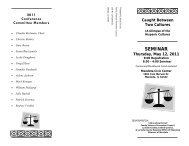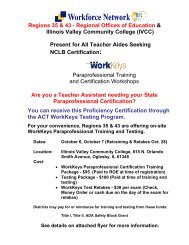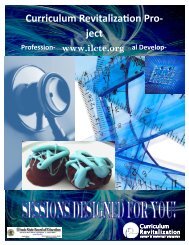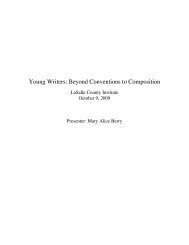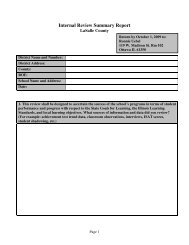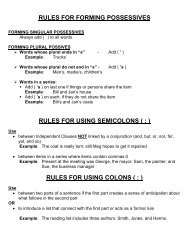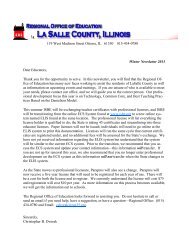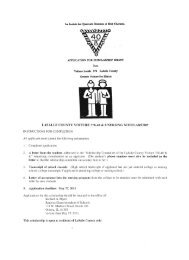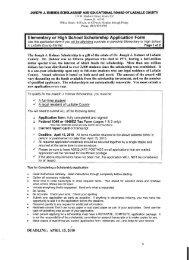WORKKEYS WRITING TEST STUDY GUIDE
WORKKEYS WRITING TEST STUDY GUIDE
WORKKEYS WRITING TEST STUDY GUIDE
Create successful ePaper yourself
Turn your PDF publications into a flip-book with our unique Google optimized e-Paper software.
• Use correct grammar (i.e. subject and verb should match – You did - He does)<br />
• Use correct punctuation and capitalization<br />
• Use only second or third person NOT FIRST PERSON (The use of you, he, she,<br />
it, they, her, him, and them is correct. The use of I, we, us, and our are incorrect<br />
and should never be used.)<br />
The reason for this rule is that the examinee is listening not<br />
involved in the message other than listening to the information<br />
and passing it on to the person that is to receive the information. The<br />
examinee should pretend that he/she is simply the receptionist that is to<br />
take down correct information and pass it along to the intended person.)<br />
• Include as many details in the written summary as possible ( never assume a<br />
fact/detail given in the scenario is unimportant and should be ignored)<br />
• Use correct paragraph style ( either indent or block format is acceptable)<br />
• Include in the message both the person the is leaving the message and the<br />
person(s) receiving the message (i.e. Ted, Pat called and left a message for you.)<br />
• Use your own words and order of presentation that make sense to you (i.e. The<br />
examinee does not have to the exact words or order of information that is given in<br />
the scenario. He/She can use different vocabulary than the one used in the<br />
scenario and arrange the information in an order that makes the most sense to<br />
him/her.)



